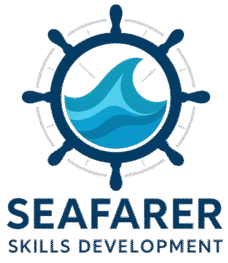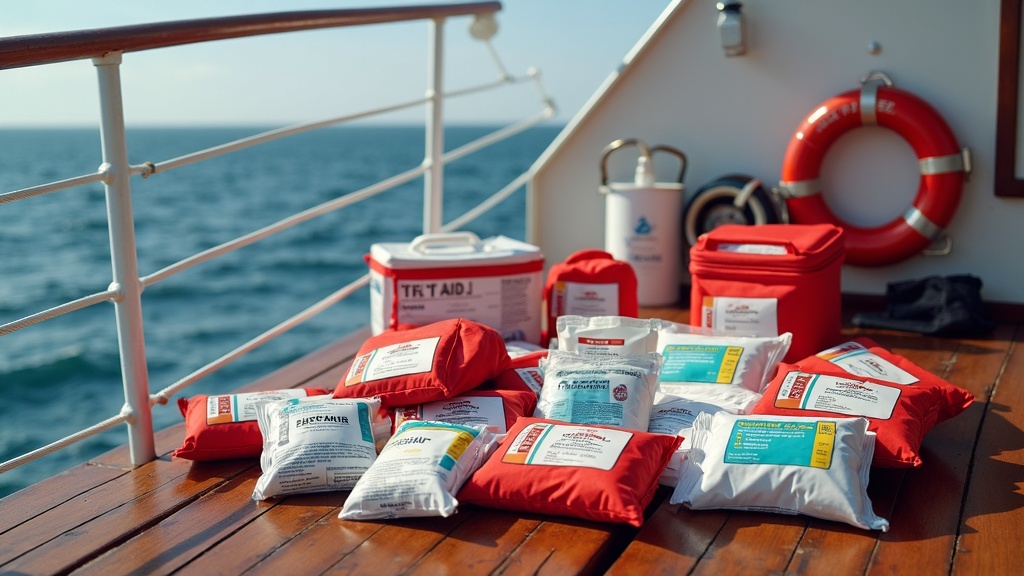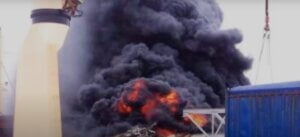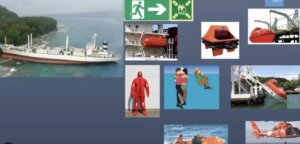If you work on a ship or plan to, knowing basic first aid can make a big difference in emergencies. At sea, help isn’t always nearby. Your quick response can save lives, lessen injuries, or keep things steady until professional medical care kicks in. Here, I’m sharing practical first aid techniques for seafarers I’ve picked up, so even if you’re starting out in the maritime world, you’ll feel more ready to look after your crew and yourself.
Why First Aid Matters at Sea
Living and working on a vessel means you face specific risks. Accidents happen—slips, cuts, burns, and even serious medical events. In my experience, the sea adds extra challenges with constant movement, tight spaces, and limited supplies compared to what you’d find on land. Mastering top first aid skills for mariners isn’t just smart; it’s a solid way to make ship life safer for everyone.
International maritime regulations, such as those from the International Maritime Organization (IMO), highlight how important it is for crews to have basic first aid knowledge. While following the rules matters, I’ve noticed real progress comes from regular drills and keeping up with training.
Key First Aid Techniques for Seafarers
Sea life calls for practical skills that work in tight, sometimes unpredictable conditions. Here are the techniques I believe every seafarer should revisit often:
- Bleeding control: Using clean dressings and applying steady pressure. At sea, I always make sure gauze or cloth is close.
- CPR (Cardiopulmonary resuscitation): Chest compressions and rescue breathing matter, especially if someone collapses from cardiac arrest, a risk on long voyages.
- Wound cleaning and bandaging: Washing using safe water and sterile supplies—these are staples in the best first aid kits for seafarers. You need to keep the bandaging stable, even with the ship’s movements.
- Treating burns: Cooling the burn at once, then covering with a clean dressing. Burns happen a lot more than most expect, mainly in galleys and engine rooms.
- Fracture support: Creating a splint using available materials, like rolled magazines or cabin hardware. Keeping a limb steady at sea is tricky but seriously important to prevent worse injuries.
- Care for hypothermia and heat stroke: Noticing the signs, like shivering, confusion, or overheating, and acting by wrapping in blankets or heading to a cooler spot. I keep mental checklists for these because the weather at sea can switch in a heartbeat.
Practicing these first aid techniques boosts your reaction time and helps with staying calm. Every drill, even with slip-ups, is a chance to learn something new.
Essential First Aid Equipment for Mariners
Picking the best first aid kits for seafarers isn’t like shopping for your car or home. Marine first aid supplies need to deal with moisture, salt, and long stretches between resupplying. Here’s what I look for:
- Waterproof containers: To keep things dry in damp, splashy conditions.
- Assorted dressings and bandages: Big, sterile gauze, rolls, and medical tape—enough for a few incidents.
- Burn gels and special burn dressings: A must, considering that engine room and galley mishaps are surprisingly frequent.
- CPR face shields or masks: Safer for mouth-to-mouth resuscitation.
- Items for makeshift splints: You’ll either have ready-made splints or need to improvise with ship supplies.
- Antiseptics and eye wash: Saltwater and machinery debris mean wounds and eye issues pop up easily.
- Painkillers and seasickness tablets: Small discomforts can balloon into major issues if left untreated at sea.
Check reviews, swap tips with other crew, and make sure the kit matches your ship’s flag state rules and the freshest marine safety standards. Keeping the kit ready and tailored takes a bit of experience and regular care.
First Aid Certification for Seafarers: What to Expect
I earned my first aid certification for seafarers before heading on my first international trip. While the requirements can depend on your rank and the ship’s size, some basics stay the same:
- Most seafarers start with Elementary First Aid from the STCW standards, covering the basics for quick action when common emergencies crop up.
- Bigger ships or higher ranks call for Medical First Aid or even Medical Care certification. These go deeper, including first aid navigation training for crew, to be ready for complex cases.
- Marine first aid courses online are more popular now. I find online refreshers great for keeping skills sharp, especially when long stints keep you away from in-person courses.
I focused hard during training on scenes that really happen at sea—like tending wounds in rough weather, using marine radios for long-distance medical advice, and handling the mental pressure that isolation brings. Many shore-based first aid classes don’t touch on these points.
Building a Safety-Focused Crew
Treating injuries is one piece of the puzzle. Crews I’ve joined take a team approach to safety. Open talk, regular runs through drills, updating first aid kits, and pro-active leadership all play a part. Leaders boost safety by organizing drills and encouraging questions about first aid in maritime accidents.
Every month, I check our kit, log expiry dates, fill in missing items, and bring up safety stories in meetings. These all help make safety more than a routine—it becomes a shared priority. Simple reminders often spark smarter habits and stronger teamwork.
Responding to Common Medical Emergencies at Sea
Learning how to handle the emergencies you’re most likely to face makes everything less stressful and leads to better results. Some of the most common situations I’ve witnessed or discussed include:
- Cuts and lacerations: Machinery, galley tools, and sharp objects in cramped spots are frequent culprits. Swift cleaning and wrapping is essential.
- Burns: Hot oil, steam, or even electrical equipment can scald. Cooling and covering the burn with sterile cloth helps guard against infection.
- Sprains and broken bones: Slippery decks and nasty weather up the risk. First, steady the limb with whatever’s handy to prevent more damage.
- Seasickness and dehydration: These sap energy and focus. Oral rehydration salts and lots of fluids are must-haves for bouncing back.
- Hypothermia and heat problems: Weather can switch fast, so knowing warning signs and basic care keeps crew out of serious danger.
- Chest pain or strong allergic reactions: These call for speed—give available meds, radio for help, and get ready for emergency action if needed.
The biggest takeaway: fast, steady action helps avoid complications. Even if nerves set in, sticking with training always pays off.
Challenges of Providing First Aid at Sea
While first aid skills are universal, giving care on a ship is different from being on land. Here are hurdles I’ve hit and how I deal with them:
- Limited medical gear: I keep backup items in my own bag and always double-check our main kits.
- Rough weather and constant movement: Choppy seas make CPR or even cleaning wounds harder. Using safety straps and calling for extra hands helps a lot.
- Slow access to medical help: We can be many days from the nearest port; good first aid is the best backup until search and rescue or onboard doctors step in.
- Communication glitches: Using ship radios to call shore-side doctors means speaking clearly, sometimes describing symptoms for those without a medical background.
- Panic and stress: Keeping cool can be tough. I use deep breaths and focus on following steps from my training; experience through repeat drills breeds calmness.
No silver bullet exists for these issues, but being prepared and aware helps a crew handle emergencies as a team.
Advanced Skills and Seafarer Tips
If you’re ready to go the extra mile, consider adding these habits and skills:
Jotting down medical events: Recording what happened, how you responded, and the outcome. It’s great for handovers, learning, and for legal or authority needs down the line.
Using ship communication tools: Get comfortable using VHF radios and satellite phones for emergencies. I include simulated calls in our practice sessions to boost confidence if a real crisis hits.
Regular checks on all medical gear: Go beyond the first aid kit—stretchers, oxygen tanks, and defibrillators should be checked as often as possible. Make a checklist your ally.
Update knowledge through online learning: Signing up for marine first aid courses online keeps you updated on new tips and techniques. Most employers see the value and are willing to cover this training.
Special Points for Long Ocean Crossings
Lengthy trips mean bigger challenges. You’re far from medical care, facing wild weather, and working with a global crew where not everyone shares the same language. Standardized first aid navigation training for crew becomes crucial. Visual guides, simple translated phrases, and clear checklists can break down language barriers and make everyone safer during emergencies.
Regularly practicing with seasickness pills, emergency blankets, and burn dressings keeps all crew sharp. Even seasoned sailors can get thrown by unexpected problems.
Best First Aid Resources for Mariners
Solid support and good training will boost any mariner’s confidence. I’vefound these resources to be helpful:
- The International Maritime Organization’s guidelines stay current with evolving vessel safety needs.
- Groups like the Red Cross run targeted marine first aid courses for seafarers, with loads of videos, downloads, and expert tips on their websites.
- Online maritime communities, such as the forums at gCaptain, provide information, tips, and stories from mariners with real-world emergency experience.
- Several marine first aid course online providers feature scenario-based videos, helping cement rare or challenging skills for crew.
By staying on top of best practices and swapping feedback with shipmates, learning never stops—and that strengthens the whole crew.
Frequently Asked Questions
Many seafarers check in about the practical side of first aid at sea. These questions pop up the most:
How can I keep my first aid skills fresh during long voyages?
Practice with your team, watch training videos, and set informal drills using what’s on hand. Online marine first aid courses are effective for ongoing skills too.
What’s the best way to build my own first aid kit for a ship?
Begin with IMO and flag state guidelines, then choose supplies recommended by experienced seafarers. Include waterproof containers, extra dressings, and versatile gear.
Are there big differences between land and shipboard first aid?
Definitely. Ships deal with motion, limited resources, and slower medical response. Training is tweaked for fast stabilization, improvisation, and clear talks with remote medical advisors.
What if I’m the only one on the ship trained in first aid?
Run through procedures with everyone, leave clear instructions, and know how to reach shore-side medical help. Try to inspire your shipmates to get trained, too.
Final Thoughts: Making Safety Part of Ship Life
Making first aid part of your regular sea habits leads to better outcomes—whether you’re handling minor cuts or serious emergencies. With training from a marine first aid course online, solid first aid kits for seafarers, and steady practice in practical first aid techniques, I’m more at ease sailing the open water. No matter your rank or experience, commit to learning and practicing. You’ll help ensure everyone’s safer until you reach port, every single voyage.








Great article — thank you for sharing these very practical first-aid tips tailored for life at sea. I especially appreciate how you emphasize bleeding control, CPR, splinting injuries with improvised materials, and managing burns and hypothermia in a ship’s challenging environment. The advice about waterproof containers and maintaining a marine-rated first-aid kit is spot on. Your point about regular drills and clear communication really brings home how first aid isn’t just about having the right supplies, but also about knowing how to use them safely when there’s motion and limited help.
I’m curious — in your experience, which first-aid scenario has been most common or hardest to respond to during your sea voyages, and how did your training prepare you for that?
Thank you so much for the thoughtful feedback — I’m really glad you found the article useful. You captured the intention perfectly: at sea, first aid is as much about preparation and adaptability as it is about technique.
In my experience, the most common scenario has been dealing with cuts and lacerations, especially when people are handling lines, tools, or gear in rough conditions. Controlling bleeding quickly becomes critical when you’re dealing with saltwater, constant motion, and limited medical resources. My training helped a lot here — especially learning to stay calm, work methodically, and improvise when ideal supplies aren’t immediately available.
The hardest situations, though, have been hypothermia-related incidents. Cold, wind, and wet decks can turn a minor slip overboard or even prolonged exposure on deck into a dangerous situation. Training in rapid rewarming techniques, reassessing vitals, and coordinating with the crew to maintain safety made a big difference.
Thanks again for engaging so deeply with the piece — your question really highlights how dynamic first aid can be at sea.